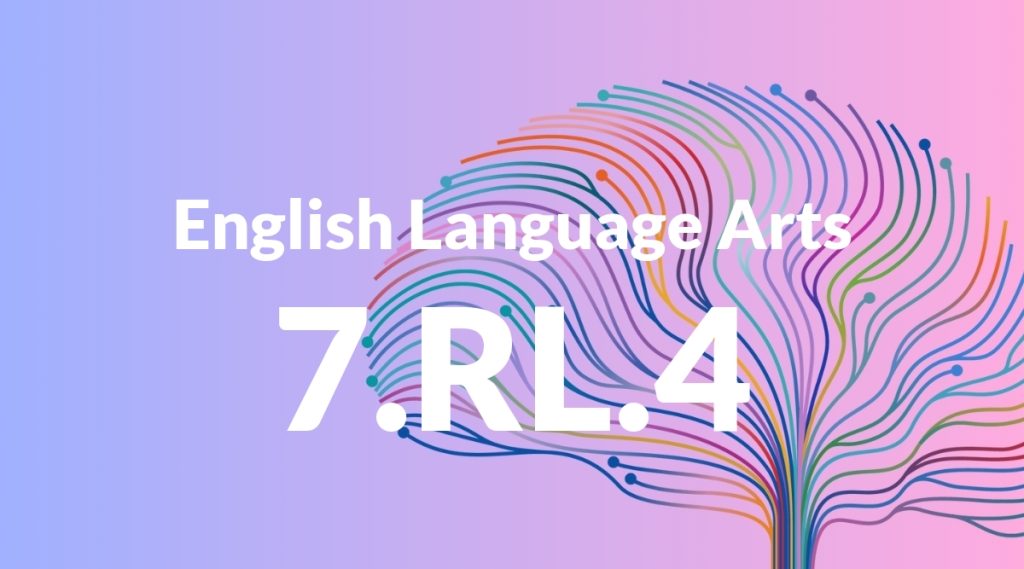Standard: 7.RL.4 – Determine the meaning of words and phrases as they are used in a text, including figurative and connotative meanings; analyze the impact of rhymes and other repetitions of sounds (e.g., alliteration) on a specific verse or stanza of a poem or section of a story or drama.
Grade level: Grade 7
Subject: English Language Arts
Domain: Reading: Literature
Teacher Overview
This standard focuses on students’ ability to determine the meaning of words and phrases in context, including figurative and connotative meanings, and to analyze the impact of sound devices like rhyme and alliteration. It is important because it helps students develop a deeper understanding of how language shapes meaning and tone in literature. Students need to know basic literary terms and have some practice identifying them in texts. They should understand that words can have meanings beyond their literal definitions.
Students will be able to analyze how an author’s word choice affects meaning and tone, preparing them for more advanced literary analysis in higher grades.
Common Misconception 1
Some students may think that words and phrases always have a literal meaning. This is incorrect because many words and phrases in literature are used figuratively, meaning they represent something other than their literal definition.
Intervention 1
Use a variety of texts to show how figurative language works. Discuss and analyze examples of metaphors, similes, and other figurative language in context.
Common Misconception 2
Students might believe that sound devices such as alliteration and rhyme do not affect the meaning or tone of a text. This is incorrect as these devices often enhance the text’s mood, rhythm, and overall impact.
Intervention 2
Provide students with poetry and prose examples that use sound devices. Discuss how these elements contribute to the text’s tone and meaning.
Prerequisite Knowledge
Students should be familiar with basic literary terms such as metaphor, simile, and personification, and have experience identifying these elements in texts. They should also have a basic understanding of how context influences meaning.
Subsequent Knowledge
After mastering this standard, students will be able to evaluate how an author’s choice of words and phrases contributes to the meaning and tone of a text. They will also be prepared to analyze more complex literary devices and their effects on a text.
Instructional Activities
- Create a figurative language scavenger hunt using a poem or short story.
- Analyze the use of sound devices in a selected poem and discuss their impact.
- Write a short story or poem incorporating figurative language and sound devices.
- Group discussion on the connotative meanings of words in different contexts.




